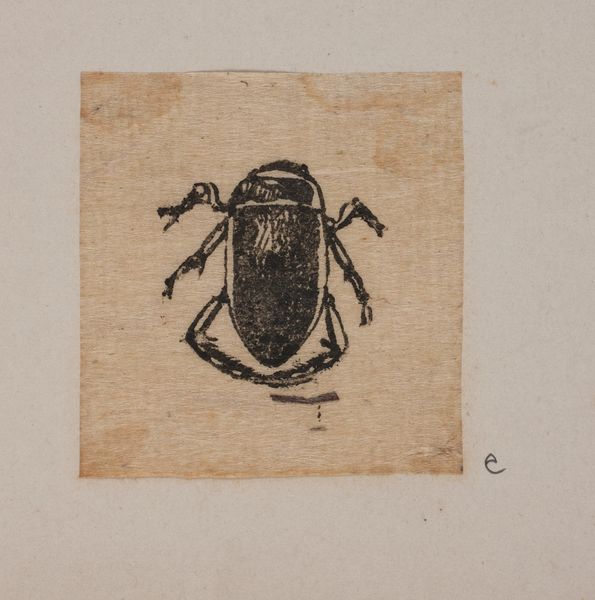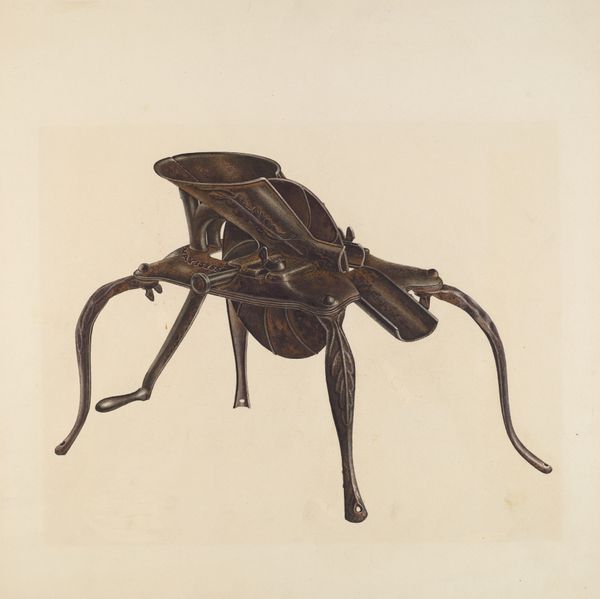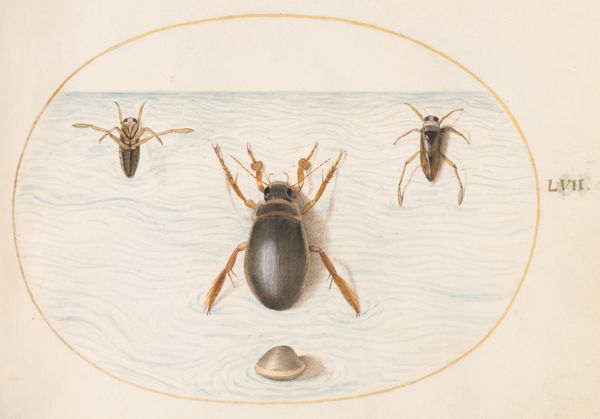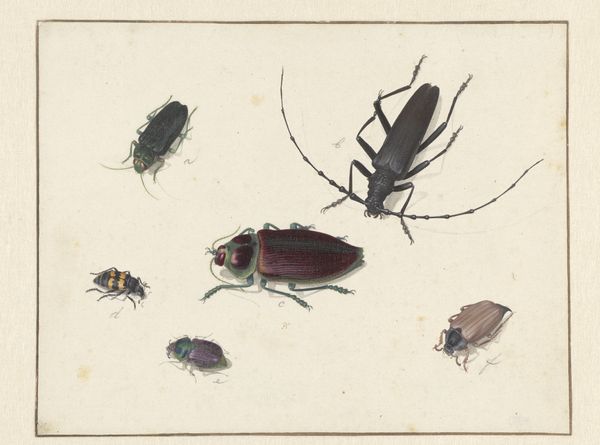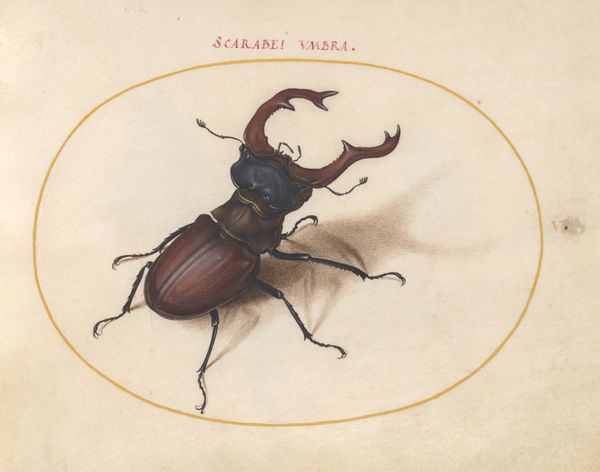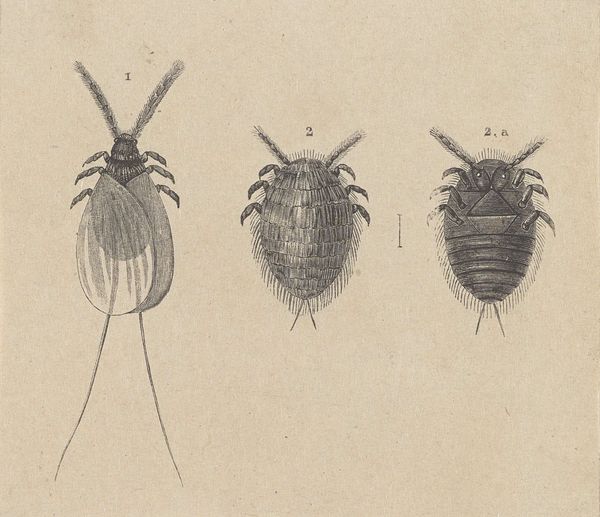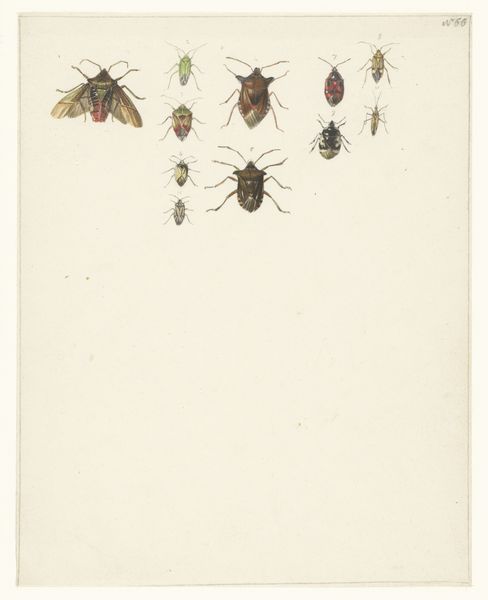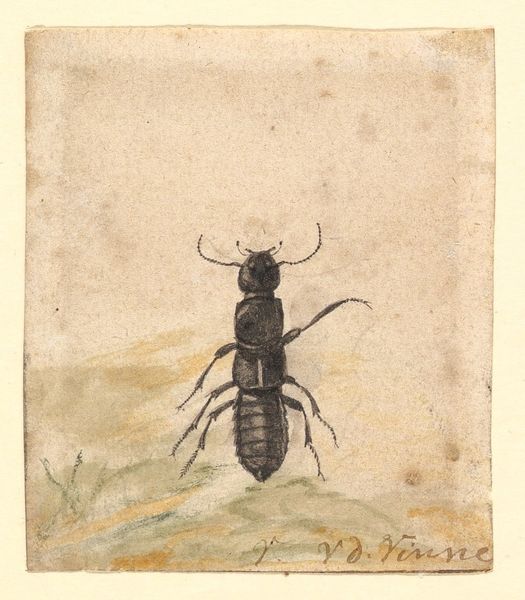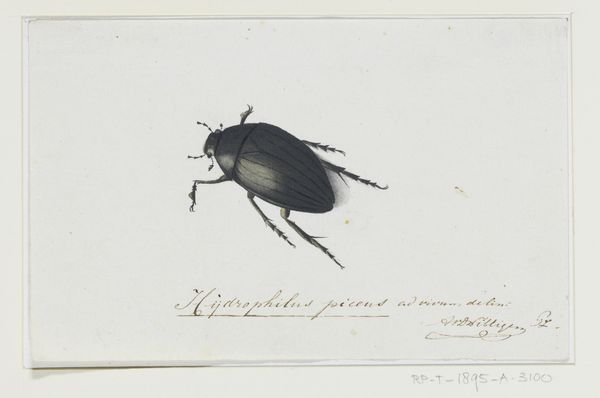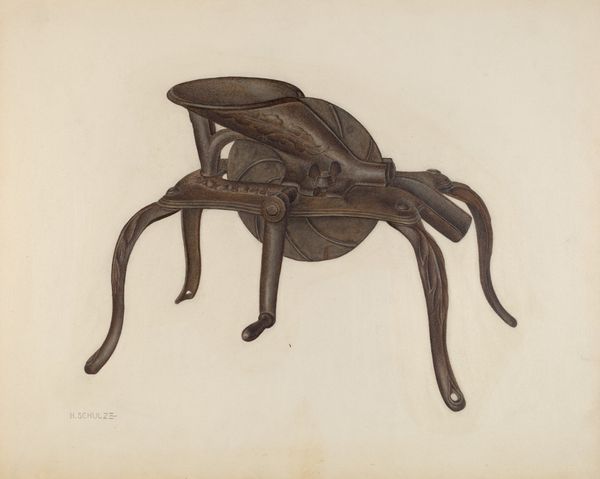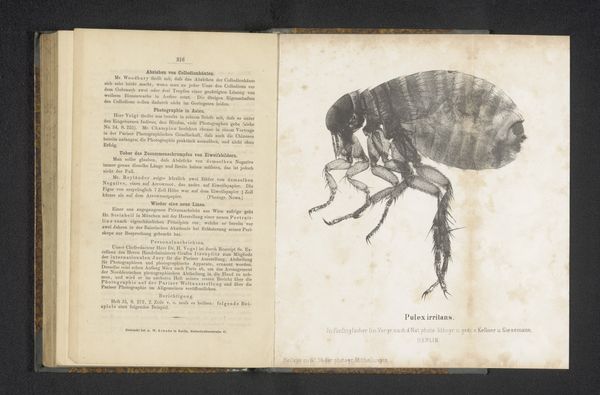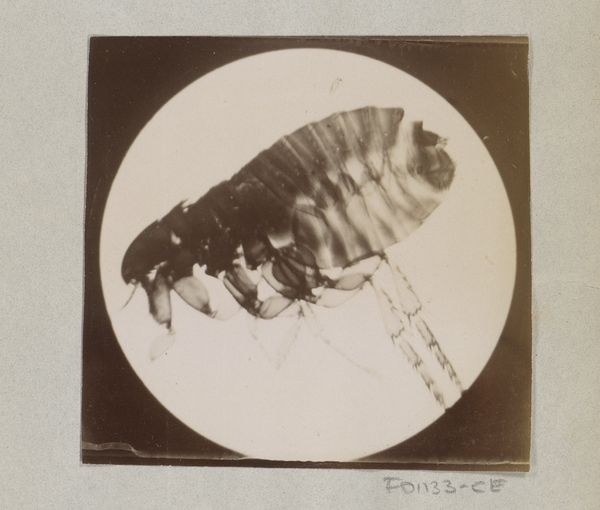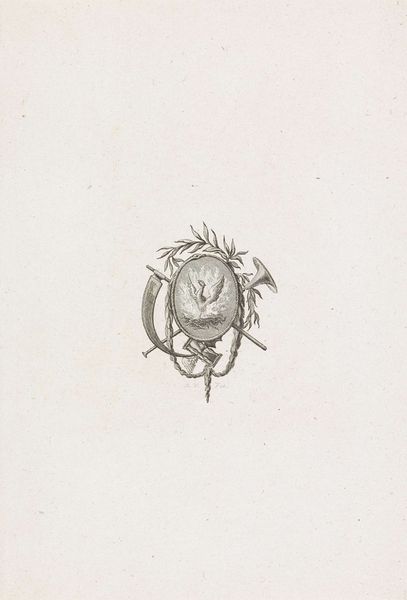
drawing, print, ink
#
drawing
# print
#
ink
#
academic-art
Dimensions: sheet: 6 3/4 x 4 1/2 in. (17.2 x 11.5 cm)
Copyright: Public Domain
Curator: We're standing before Pierre Joseph Redouté's "A Stag Beetle," an ink drawing and print, created sometime between 1770 and 1840, and currently residing here at the Metropolitan Museum of Art. Editor: Well, first off, it has an almost intimidating, stoic presence against the stark white. Is it just me, or does the stark presentation elevate this beetle to something…almost regal? Curator: That's interesting. It's true, Redouté’s works often existed at the intersection of art and science, reflecting the Enlightenment's desire to classify and understand the natural world. Beyond scientific record, I always think about the politics of access and knowledge in that era. Who had the resources, the privilege, to study and depict nature? Editor: Absolutely, the politics of observation are crucial here. Linnaeus's system was transforming how Europe, in particular, thought about the natural world and man’s dominion over the world. This controlled gaze made way for scientific progress while reinforcing hierarchies, certainly. What was it like to experience this insect in everyday life? Curator: Redouté and his contemporaries served patrons with particular desires: wealthy nobles and aristocrats and increasingly scientific collections wanted images that were both aesthetically pleasing and scientifically accurate. Consider what it means to frame something as "art," and the audience this invites versus others. Who could afford a print like this? Who would it inspire and inform? Editor: So, moving beyond its social setting, what techniques did Redouté employ to achieve that almost sculptural level of detail? The textures he coaxes out of the ink… it’s almost photographic! Curator: Indeed! He was celebrated for his meticulous detail and use of stippling and hatching techniques. It’s tempting to draw connections to Dutch Golden Age painters like Rachel Ruysch. These works demonstrate intense observation combined with superb rendering. Editor: Ultimately, in the cultural imaginary this beetle looms large—larger than life almost, prompting us to see insects differently, but it also makes me think of the long arc of environmental studies and animal rights discourses and their long history. What a curious convergence! Curator: Yes, considering his contributions to natural history alongside his influence on art, Redouté shows how representation shapes not just what we see, but how we value, or devalue, beings around us. It serves as a reminder to examine what these historical depictions have made.
Comments
No comments
Be the first to comment and join the conversation on the ultimate creative platform.
